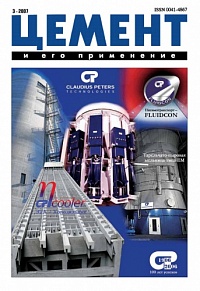The article provides a description of the instruments and software for ensuring contactless control over the status of rotary kilns, refractory lining and bandage displacement with the information routed to the main cement plant control system.
The article describes the model of a non-stationary turbulent multi-profile gas flow with a high dust content. The model enables developing electrostatic precipitators for cleaning the gases that contain 1000 g/m3 of dust or more.
The design model for gas flows and dus...
The article shows the role of the Kyoto protocol in enhancing the attractiveness of foreign investments in the Russian and Ukrainian cement industries. As an example, it describes the project involving the wet-to-dry conversion of cement production at the Podolsky Cem...
The article cites the results of production activities of OAO Ukr-Cemremont Company, which specia- lizes in repairs of cement industry equipment. It lists the jobs performed by the company and discusses the problems faced by enterprises engaged in repairs.
The article reviews the development stages of the calorimetric method for analysis of cement production materials. It shows the role and applications of the calorimetric method for studies of the clinker structure and cement hydration.
The article describes the main ideas and content of the seminar Current state and trends in the development of automated plants for cement and raw material grinding based on the domestic dosing equipment and sampling means.
On 1-3 May FLSmidth, the leading cement industry equipment producer, celebrated its 125th anniversary in Copenhagen. Invited to this event were customers, partners and colleagues of FLSmidth from various countries of the world. The Russian delegation was represented by ...
The article provides information on the proceedings of the symposium held within the framework of WasteTech-2007 International Congress in Moscow on 31 May.
The article reviews the advantages and disadvantages of the currently applied methods of determination of compatibility of cement with surfactant additives with Portland cement.
The article considers ways of a sharp increase in cement production at minimal costs and within a short time. It suggests a plan for reconstruction of the production line to convert it from the wet to the dry production method.





